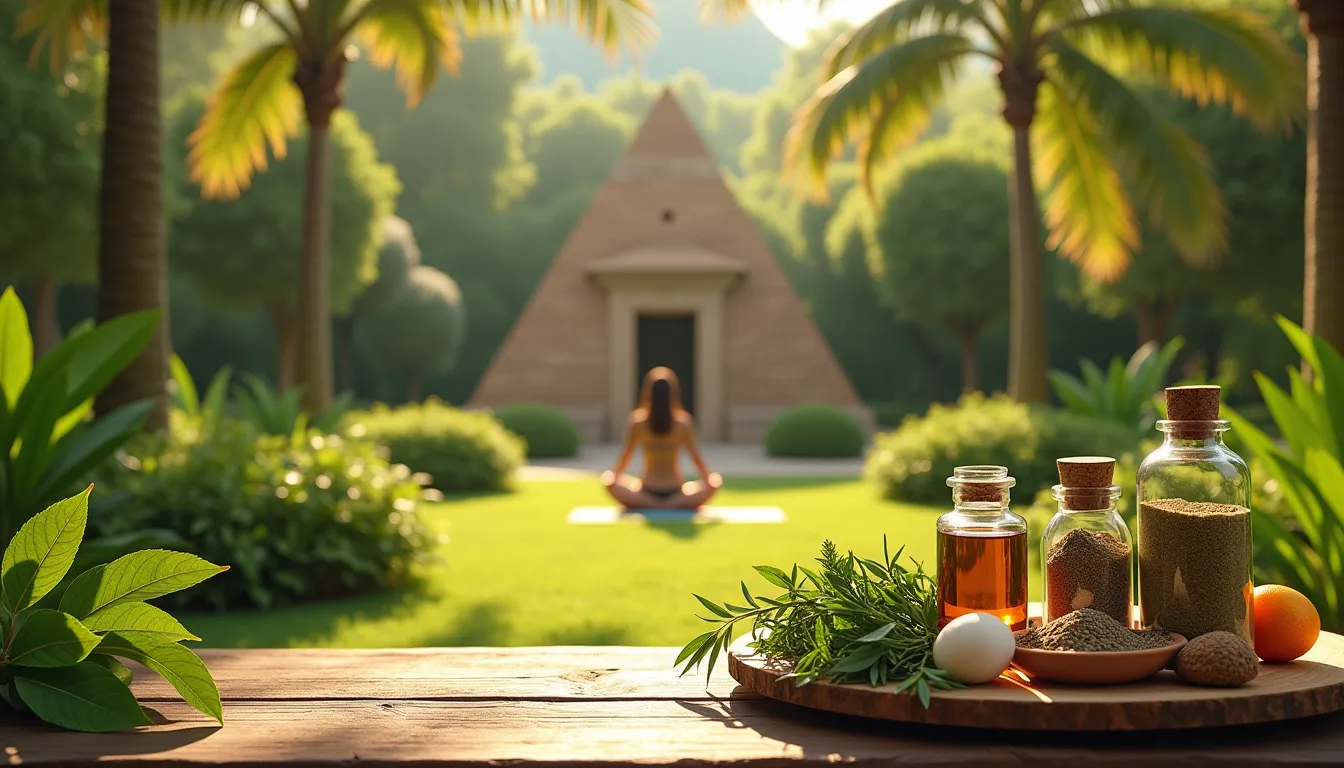
The ancient Egyptian Civilization-a wonder among all other great civilizations of humans offers more than just awe-inspiring marvels of pyramids and intricate hieroglyphics. It also holds timeless lessons in sustainability that will reach deep into our modern world. Their innovative methods regarding agriculture, architecture, resource management, and environmental balance signal a deep understanding of living in balance with nature.
Today, against a tide of rising global environmental challenges, the wisdom of ancient Egyptians inspires modern sustainability across diverse sectors. We should look more closely at areas where their practice meets up with modern-day sustainability.
1. Sustainable Agriculture: Lessons from the Nile
Agriculture was the backbone of ancient Egyptian civilization and closely related to the rhythm of the Nile River. This practice allowed for long-term maintenance of soil fertility, avoidance of waste, and optimal utilization of water supplies, providing for a steadily increasing population.
Some Key Ancient Practices:
- Irrigation Systems:
The Egyptians developed complex irrigation canals and basins to channel floodwater efficiently, thus enabling them to farm all year without depleting water resources. - Crop Rotation:
Crop rotation, to keep the soil good and fertile, was effected with grain crops, legumes, and other types of crops. - Natural Fertilization:
Natural soil fertilization was effected by using organic materials such as silt from the Nile floods.
Modern Applications:
- Smart Irrigation Systems: Advanced technologies now replicate the efficiency of Egyptian irrigation, using weather data and soil sensors to minimize water waste.
- Regenerative Agriculture: The principles of crop rotation and organic soil enrichment are essential to today’s sustainable farming practices.
2. Eco-Friendly Architecture and Building Techniques
The Egyptians were pioneers of durable, sustainable architecture. Their building was to be able to survive the harshest desert climates with a minimum amount of resources, principles highly relevant to green buildings today.
Key Ancient Practices:
- Passive Cooling:
Structures were built with thick mudbrick walls and narrow windows to provide natural insulation, keeping interiors cool without external energy. - Local Materials:
Limestone, mudbrick, and granite were employed primarily to reduce transportation and rely on plentiful local supply. - Solar Alignment:
Temples and monuments were aligned with a purpose-to utilize natural light to the fullest and consume less energy.
Modern Applications:
- Energy-Efficient Buildings: Modern architects also apply passive cooling techniques, influenced by Egyptians, to decrease the consumption of air conditioning.
- Sustainable Materials: The use of local and recyclable materials follows in the footsteps of ancient times in terms of minimizing environmental impact.
- Integration of Solar Power: Solar panels and smart lighting systems reflect the same Egyptian belief in sunlight as an essential resource.
3. Resource Management and Circular Economy Practices
The ancient Egyptians were indeed apt resource managers; they used every resource judiciously and with minimum wastage, an early precursor to the circular economy model.
Key Ancient Practices:
- Papyrus Recycling:
Old papyrus scrolls were often reused, reflecting an early understanding of material efficiency. - Composting:
Organic waste, such as crop residues, was composted and returned to the soil for fertility.
Modern Applications:
- Recycling Systems: Modern waste management systems are based upon the principle of Egyptian waste management through the reutilization of material.
- Circular Economy: Today’s emphasis on designing products for recyclability and reuse is also in tune with the zero-waste philosophy of the Egyptians.
4. Solar Energy: Harnessing the Power of the Sun
The Egyptians were the followers of the sun and their god Ra, hence implementing solar principles in every day-to-day activity. Their thinking was advanced, though the technology was at a nascent stage.
Key Ancient Practices:
- Sunlight in Design:
Homes and temples were designed to incorporate as much natural light as possible, eliminating or reducing the need for extraneous lighting. - Solar Drying:
They used the sun to dry crops and preserve food very practical and renewable method.
Modern Applications:
- Solar Panels: Photovoltaic systems are a direct evolution of harnessing sunlight for energy, reducing dependence on fossil fuels.
- Sustainable Food Preservation: Solar-powered dryers and similar innovations built upon the Egyptians’ techniques.
5. Water Conservation in a Desert Environment
The people living in one of the most arid regions of the world devised very efficient ways for water conservation.
Key Ancient Practices:
- Canal Networks: They made extensive networks that drew the water from the Nile River down to the farmlands efficiently.
- Water Storage Basins: Basins collect and stored water during the flooding season for use during drier months.
Contemporary Uses:
- Rainwater Harvesting: Modern systems, borrowing from ancient techniques, collect and store rainwater for use in agriculture and households.
- Water Recycling: Advanced technologies now achieve what the Egyptians did so efficiently, putting emphasis on conservation and reuse.
6. Biodiversity and Ecosystem Balance
The ancient Egyptians had a deep respect for the environment in which they lived, encouraging biodiversity and maintaining the balance of their ecosystem.
Key Ancient Practices:
- Native Crops:
They grew crops such as flax for linen and papyrus for writing, ensuring that native plants were used sustainably. - Animal Cultivation:
Animals like bees were valued for the contribution they made both to agriculture and everyday life.
Modern Applications:
- Biodiversity Conservation: The modern emphasis on the protection of indigenous species and ecosystems is underpinned by the same notion of balance and sustainability conceptually.
- Eco-Friendly Textiles: The resort to natural fibers such as flax is actually a continuity of the ancients’ practices regarding sourcing materials in a non-destructive way.
Timeless Wisdom for a Sustainable Future
The ingenuity of the ancient Egyptians in adapting to their environment while preserving its resources for future generations is incredible. Be it their agricultural techniques or their architectural designs, they had a deep respect for the natural world.
In many ways, these are the legacies that follow modern sustainable practices. Integrating their wisdom into today’s innovation opens ways to a greener, more harmonious future that honors lessons from the past.
Would you like more specific aspects of Egyptian sustainability or assistance in drawing the connections for a project? Let me know!






